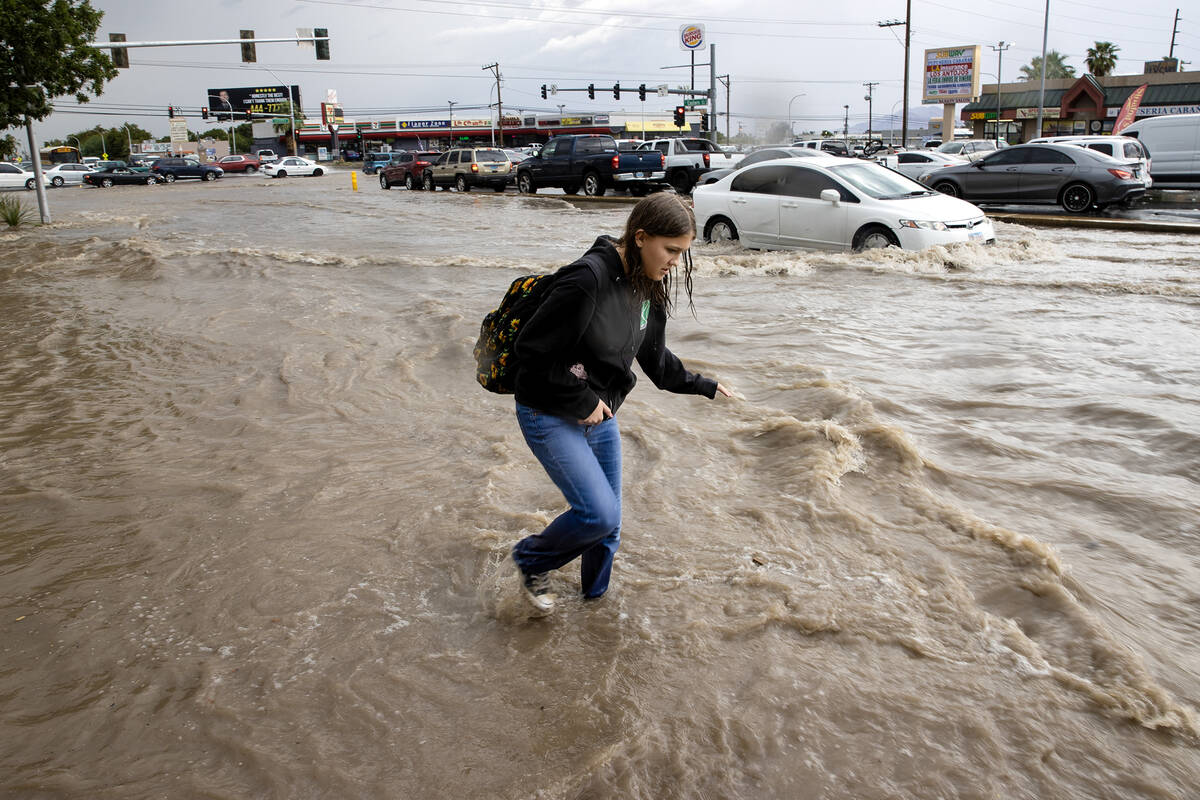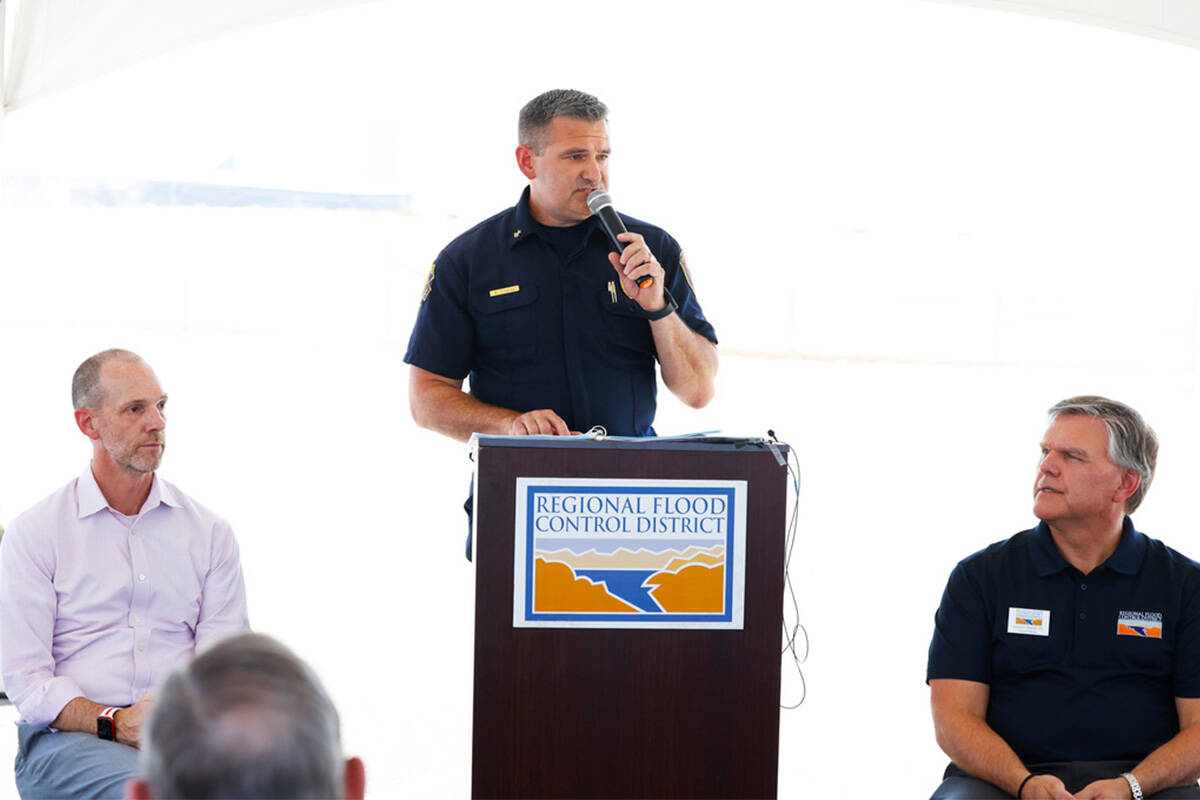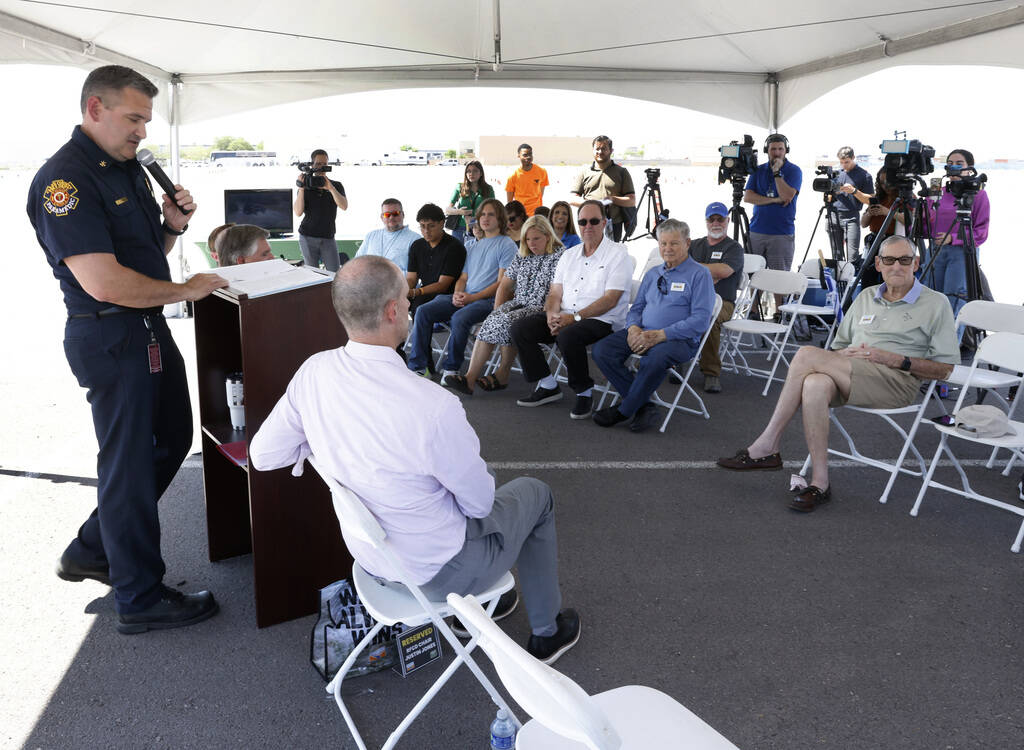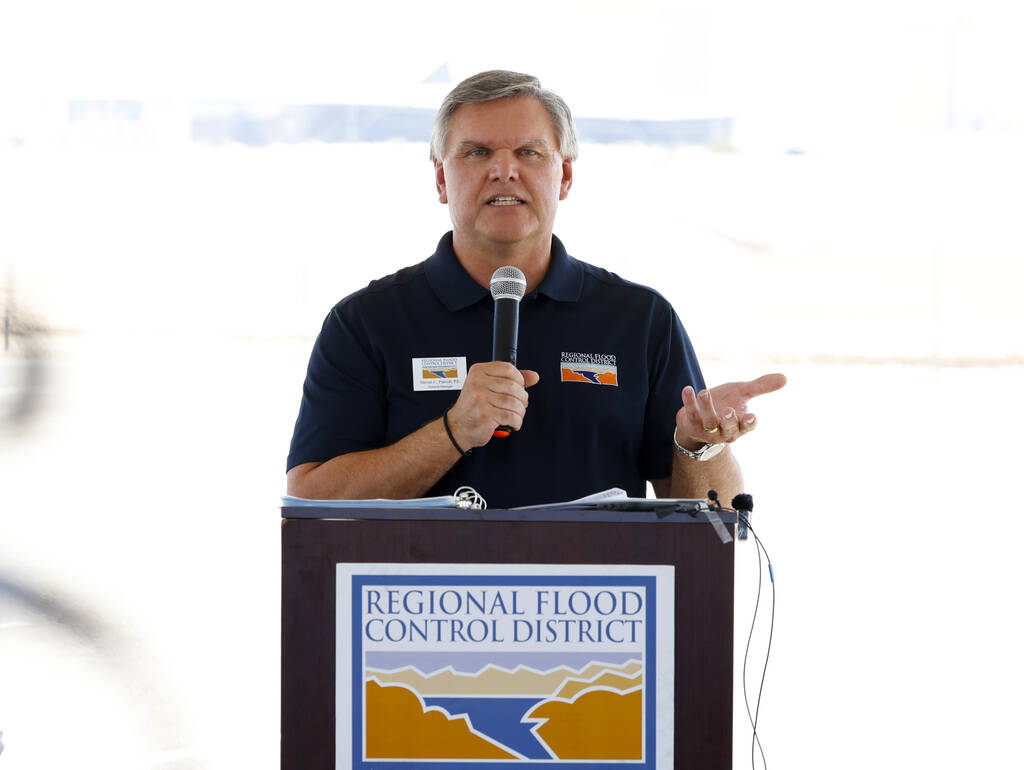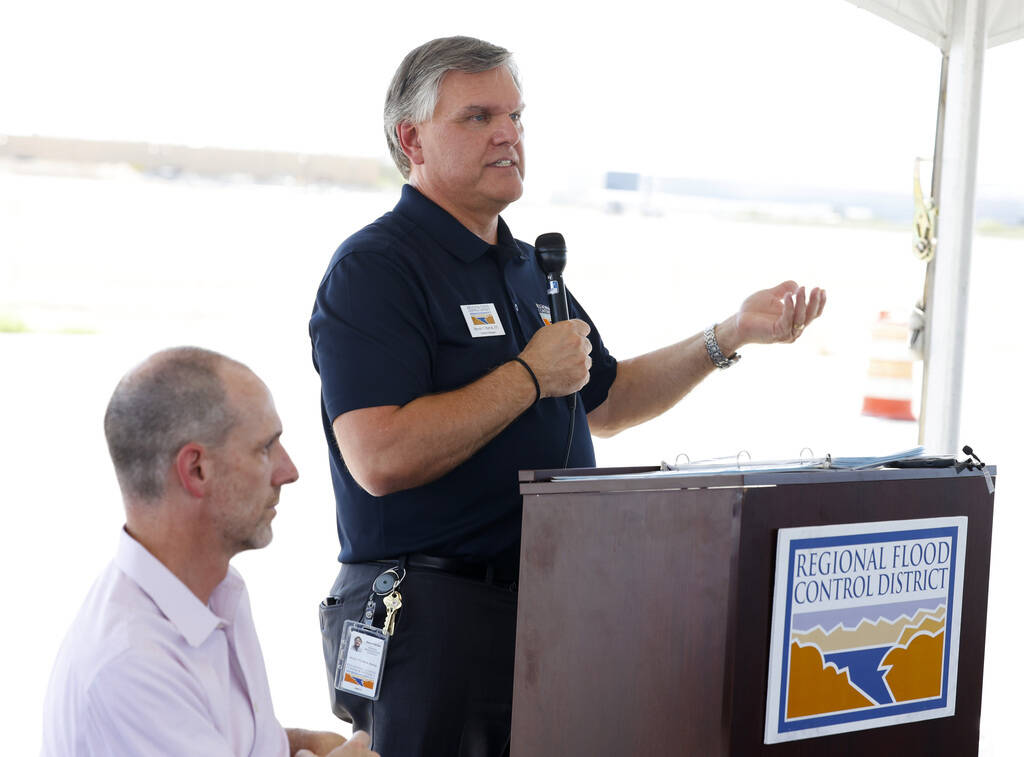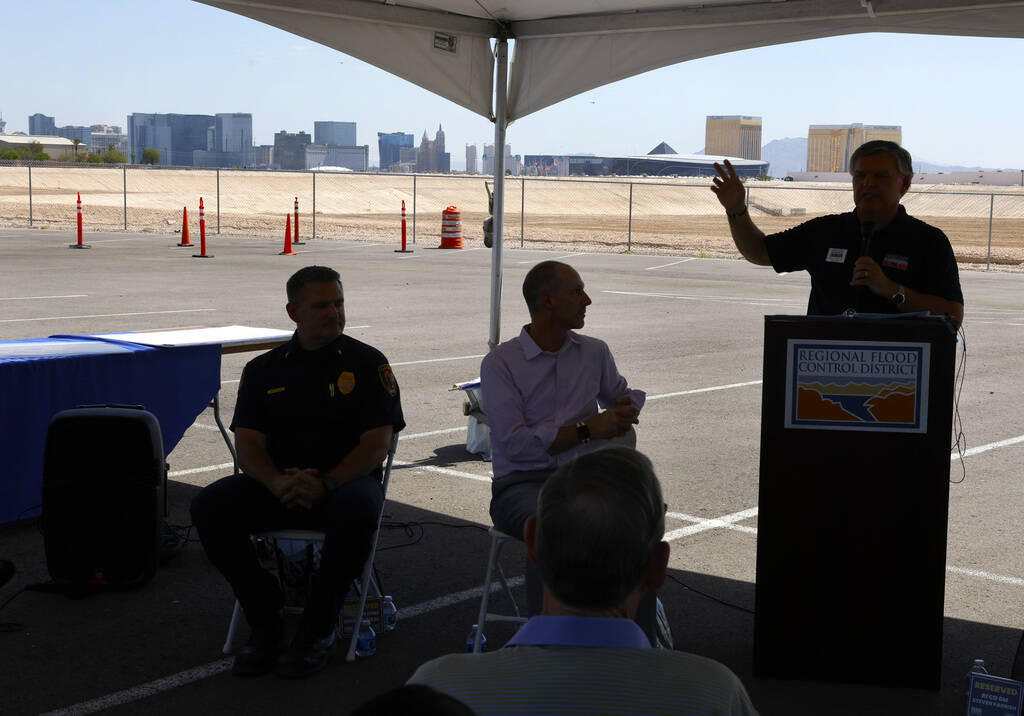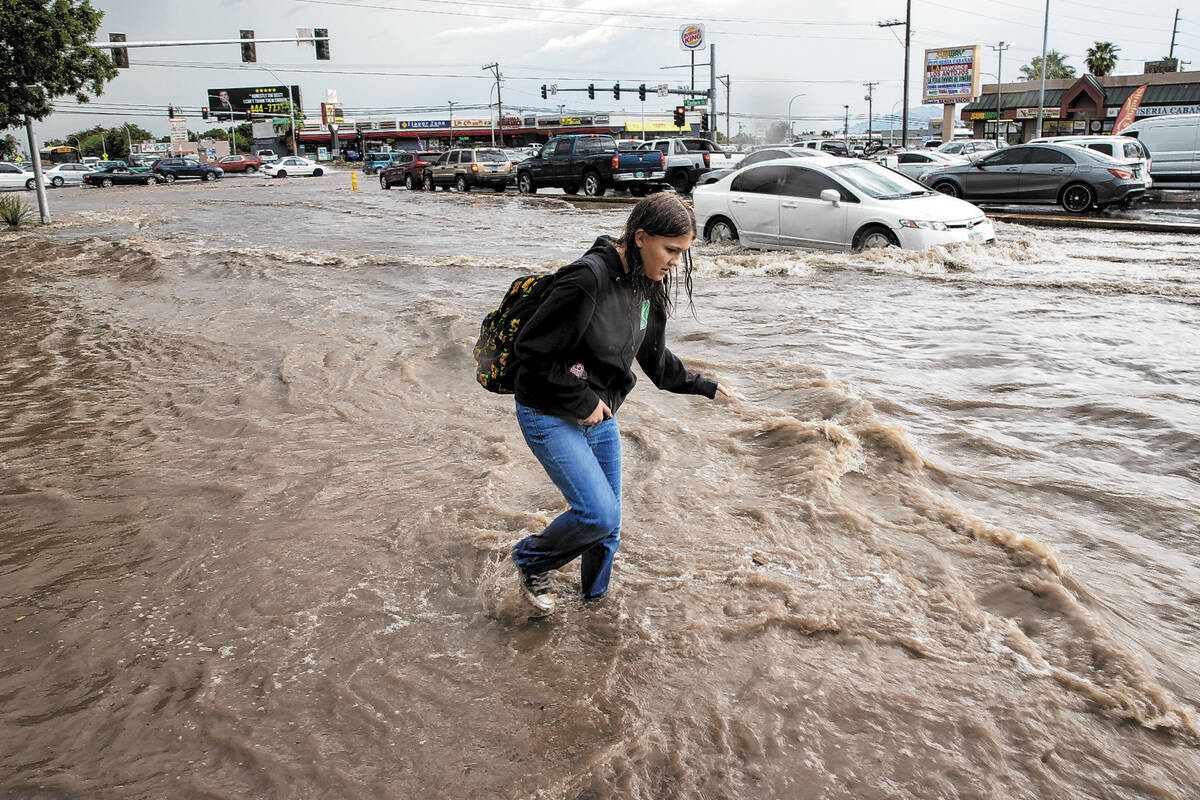Monsoon season is near. Here’s what to expect in Las Vegas
Nevadans live in the driest state in the nation. But when cities like Las Vegas get rain in the summer months, it’s intense, shutting down roads, stranding people in their cars and even claiming lives.
After a wet, stormy 2023 that included Tropical Storm Hilary, the National Weather Service is predicting a noticeably weaker monsoon season in Southern Nevada, Clark County officials said at a news conference Tuesday. The season is about to begin in July, usually lasting until September.
And the county is doing what it can to keep residents safe. The Regional Flood Control District has completed about 75 percent of the stormwater upgrades it laid out in its master plan, including 110 basins that collect water as well as more than 713 miles of channels and storm drains.
Steven Parrish, the flood control district’s general manager, said the county will keep expanding its infrastructure as Southern Nevada grows. Overall, Las Vegas is keeping up with its yearly flash floods, he said.
“Those facilities did their job,” Parrish said. “They captured that water, and they carried it safely out to Lake Mead. But there are areas where we have more work to do.”
Lessons learned from Mount Charleston flooding
While the valley was spared the full fury of Hilary, the small town of Mount Charleston about 40 miles west of Las Vegas bore the brunt of flooding impacts.
Many residents didn’t have water and were unable to leave the mountains for weeks, but much of the town’s homes emerged unscathed, said Clark County assistant fire Chief Brian O’Neal, who helped coordinate the county’s response to the town’s flooding.
Staying in your home during similar storm events has to do with your personal level of preparedness, O’Neal said. In the case of Mount Charleston, the unique road system up in the Spring Mountains made leaving after the storm nearly impossible.
Regardless of where you live, it’s important to have at least 72 hours’ worth of water available and consider stocking up on nonperishable food that can be eaten without being cooked, he said.
“In order to avoid becoming a victim yourself, stay alert to the possibility of flooding and follow the guidance,” O’Neal said.
Las Vegas’ floods may only intensify
If you can, the best course of action is to stay inside during flooding and out of your car, officials said.
Failing to do so can be deadly. There were three deaths attributed to flooding last year: two homeless people and 13-year-old Ryan Taylor, who rode an inner tube and drowned, said Parrish, of the flood control district.
“I get tired of hearing: ‘Oh, we had a 100-year storm. We’re good for another 100 years,’” Parrish said. “I wish Mother Nature was that predictable.”
Chris Outler, lead forecaster at the National Weather Service’s Las Vegas office, said that while this season may be less destructive, it only takes one storm to have a destructive effect on Southern Nevada.
The Pacific Ocean is getting warmer, which scientists have said is an effect of climate change. That can mean more hurricanes and intense storms, Outler said.
“A warmer atmosphere holds more water, which means heavier flash flood events,” he said.
Contact Alan at ahalaly@reviewjournal.com. Follow @AlanHalaly on X.



